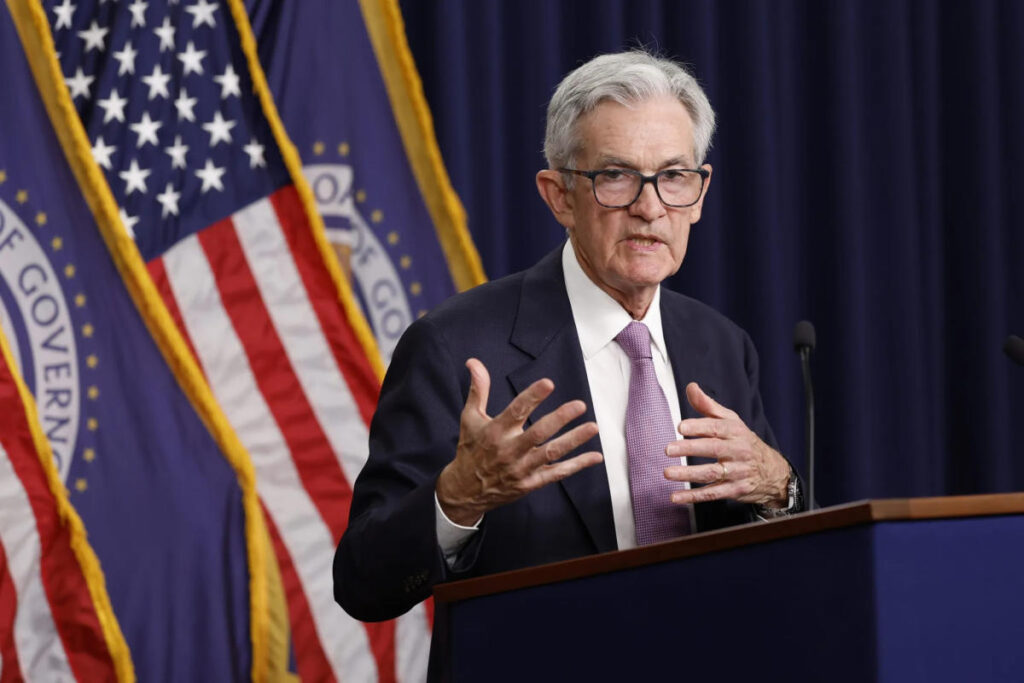Michael Feroli, JPMorgan’s chief U.S. economist, was one of the only forecasters on Wall Street who accurately predicted the Federal Reserve’s half-point rate cut on Wednesday, and he sees the same thing happening again.
Almost all of his peers expected the Fed to ease rates by a quarter point, with some noting that a surprise uptick in core consumer inflation last month would prevent central bankers from going with a jumbo-sized cut. Others on Wall Street warned that a bigger move would signal that the economy is in worse shape and needs extra help.
But Feroli said in a note on Thursday that the Fed should have lowered rates in July and that a 50-basis-point cut this month would help policymakers catch up.
He also pointed out that Fed Chair Jerome Powell was able to put a hawkish spin on the dovish rate cut by touting the strength of the economy and the desire to keep it strong.
“In other contexts, a larger move may convey greater concern about growth, but Powell repeatedly stressed this was basically a joyous cut as ebbing inflation allows the Fed to act to preserve a strong labor market,” Feroli wrote. “Moreover, if policy is set optimally, it should return the economy to a favorable place over time.”
Fed Governor Christopher Waller echoed that sentiment on Friday, telling CNBC that he voted for the half-point cut because inflation was cooling more quickly than he anticipated.
Central bankers will meet again Nov. 6-7, and Feroli expects another 50-point reduction, though that’s conditional on the next two job reports showing more weakness.
Job gains that come in stronger, however, would seal the deal for the Fed’s “goldilocks scenario” of quarter-point cuts at the November meeting and the one in December, he added.
Investors are spilt nearly evenly between 25 points and 50 points for the November meeting, according to CME’s FedWatch tracker. And the so-called dot plot of Fed officials’ forecasts suggests they anticipate two quarter-point cuts by year’s end.
For his part, Powell cautioned that the Fed’s big move this month is not indicative of the pace of subsequent rate moves in the easing cycle.
“Ultimately what we found most important in what Powell said was also among the least surprising things he said: future decisions are going to depend on the data,” Feroli observed. “If labor markets continue to soften, we could see more large cuts ahead. If job growth and the unemployment rate stabilize the path is clear for a gradual move back to neutral.”
Meanwhile, economists at Bank of America also see a half-point cut in November. After that, they see a series of quarter-point cuts until the fed funds rate hits 2.75%-3% sometime in 2025, down from 4.75%-5% today.
At Citi, economists have taken a dim view of the economy for several months, warning that a recession is likely. They also expect a half-point cut at the next Fed meeting with the outlook tilted toward more large cuts in the future.
“Powell struggled to explain why the labor market would stabilize around current levels and not continue to deteriorate further when rates will still be at levels the Fed deems restrictive for at least another year,” Citi wrote in a note on Friday. “And given that he described the 50bp cut this week as a ‘commitment’ to not get behind the curve, we think the bar for a continued weakening employment trend to prompt additional large rate cuts is low.”
This story was originally featured on Fortune.com
Read the full article here

